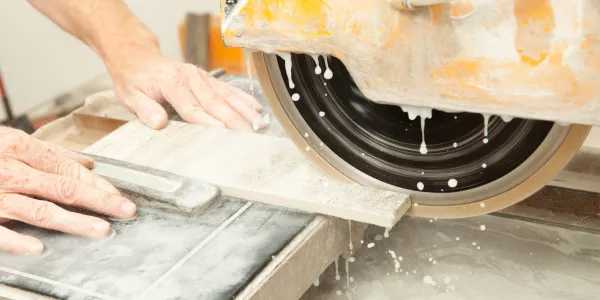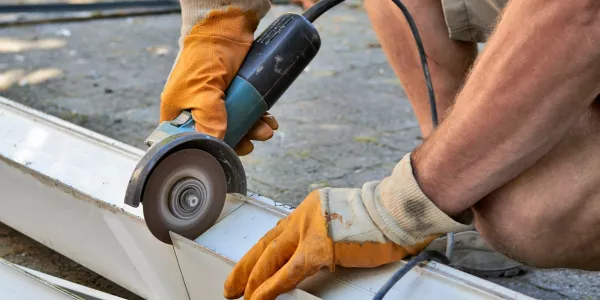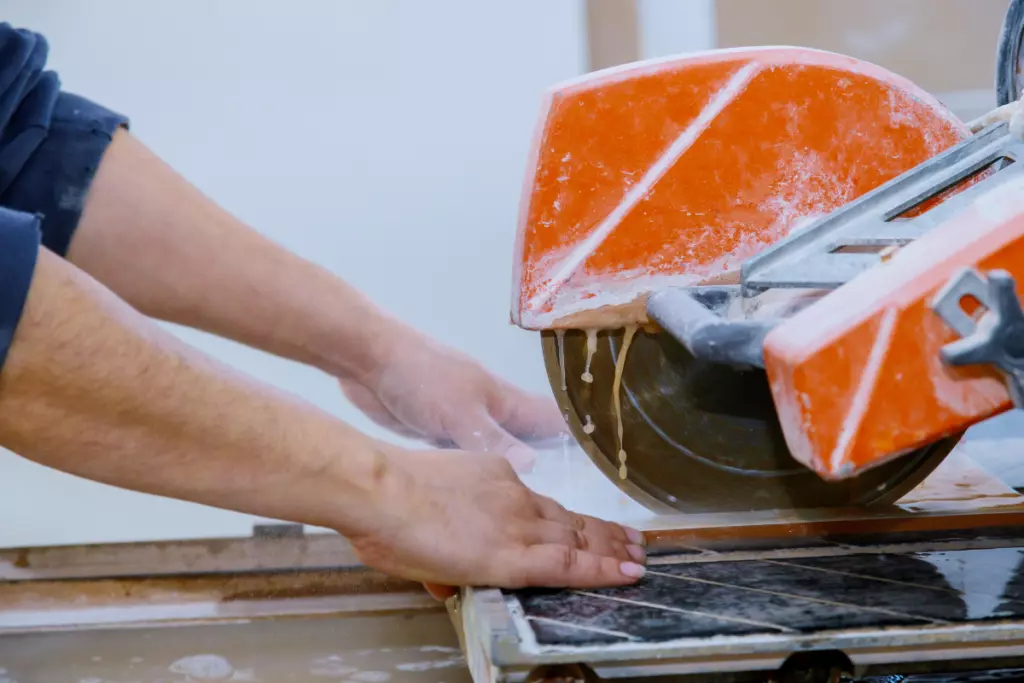If you are getting ready to cut porcelain tiles, be aware that it is a delicate process that demands precision and patience. Whether you're into DIY home improvement or a professional contractor working on a client's kitchen renovation, you don’t want cracked or poorly cut tiles when you’re done.
You also want to be sure that they have been measured and cut correctly. For this and many other reasons, knowing how to cut porcelain tiles efficiently and effectively is a skill worth mastering.
What is the Best Tool for Cutting Porcelain Tiles?
It is very difficult to answer this question, since it depends largely on what you need. You need to consider the type of cut you need to make. We listed here the most common tools used:
Wet Saw

A wet tile saw is a fixed saw that looks like a small table saw, but it uses water to cool the diamond blade, reducing dust and preventing the tile from overheating and cracking. This is the most precise and efficient tool for cutting porcelain tiles.
If you have a good amount of work and want to prevent the machine from overheating, or if you are looking for straight cuts or notches, this is the ideal choice.
Manual Tile Cutter

A manual tile cutter, also known as a rail cutter, is an ease to use scoring tool, perfect for cutting straight lines in ceramic and porcelain tile. It scores the tile, which can then be snapped along the scored line.
This is the least expensive option when talking about cutters. It's worth noting that it may not be the best option for thicker or harder porcelain tiles.
Angle Grinder

It is a handheld power tool first created to polish abrasive surfaces, but, due its practicality and interchangeable power source it started to be used for grinding (abrasive cutting).
Equipped with a diamond blade, an angle grinder is suitable for making intricate cuts, such as curves or corners. It’s a more manual process and requires a steady hand.
Can You Manually Cut Porcelain Tile?
Yes, you can. For that you will have to use a manual tile cutter or tile nippers (for small, irregular cuts). As we have explained above, the process of opting for manual tile involves scoring the tile with a sharp cutting wheel and then snapping the tile along the scored line. On the other hand, tile nippers can be used to nibble away at the edges of the tile to make circular or irregular cuts.
Should You Cut Porcelain Tile Wet or Dry?
Well, it depends on which tool you are using. When using power tools like a wet saw, porcelain tiles should ideally be cut wet. The water acts as a coolant, keeping the cutter cool and reducing dust, which is important, even more if you have a lot of tile to cut.
Also, porcelain produces a good amount of fine dust when cut. However, if you’re using a manual tile cutter or nippers, these can be used dry since there is no blade generating heat.
Step-by-Step Guide to Cutting Porcelain Tile
1. Measure the area and Mark Where You Need to Cut
Accuracy is very important. First measure the area where the tile will be placed and mark your tile accordingly, using a pencil or a tile marker.
2. Prepare a Workspace
Ensure you have a clean and organized place to do the job. The surface where you are going to mark and cut the tiles need to be well-lit and flat to guarantee precision. If using a wet saw, fill the reservoir with water and make sure it’s plugged into a GFCI outlet for safety.
3. Scoring and Snapping the Tile (for manual cutters)
With a manual tile cutter, align the scoring wheel with the marked line on the tile, apply pressure, and slide the cutter along the surface to score. After scoring, apply a downward force to break the tile cleanly along the scored line.
4. Cutting with a Wet Saw
When using a wet saw, after marking where you need to cut the tile, you align it with the cutting guide, turn on the saw, and gently push the tile into the blade, letting the saw do the work without force.
5. Using an Angle Grinder
For intricate cuts, mark your line, secure the tile, and carefully follow the line with the angle grinder. This method requires a steady hand and eye protection.
6. Smoothing the Edges
After cutting, it’s a good idea to smooth out the edges using a rubbing stone or sandpaper to minimize sharpness.
Don’t Forget About Safety
When handling these cutting equipment make sure to wear appropriate safety gear such as goggles, gloves, ear protection, and a dust mask, when cutting wet or dry.
Maintenance of Tools
To guarantee good functionality and life span of the tools, you need to keep them in good condition. Regularly check the blades for wear and ensure that wet saws are clean and free of tile residue that can affect performance.
People also ask
Why use porcelain?
- Porcelain tiles are durable. They are strong enough to bear heavy foot traffic and even water splashes for years.
- They are also easy to maintain and clean. With a little bit of water and a good mop you will keep your tiles in good shape.
- And on top of all that, porcelain tiles are pretty versatile in that you are sure to find one that suits your personal aesthetic tastes.
What precautions should I take when cutting porcelain tile?
Safety and precision. First, make sure you are wearing appropriate safety gears, then be precise when measuring the area where the tile will be laid and when marking the line that needs to be cut.
How do I avoid chipping the porcelain tile while cutting?
You can start by using the right blade. A strong wet diamond saw is the most indicated to prevent your porcelain tile from chipping. Second of all, a steady and patient hand will make a big difference. Try not to rush and keep your hands firm when cutting, scoring, and snapping the tile.

 Marcio Vasconcelos
Marcio Vasconcelos





